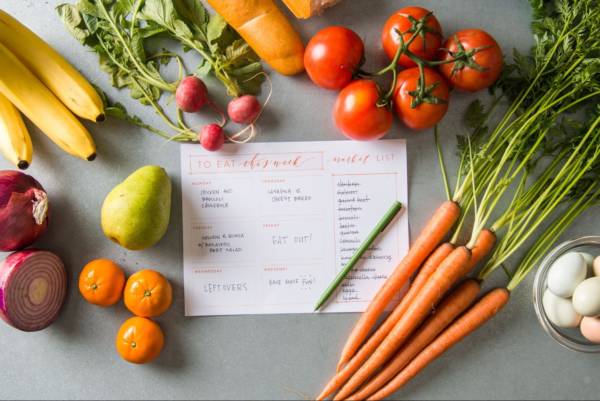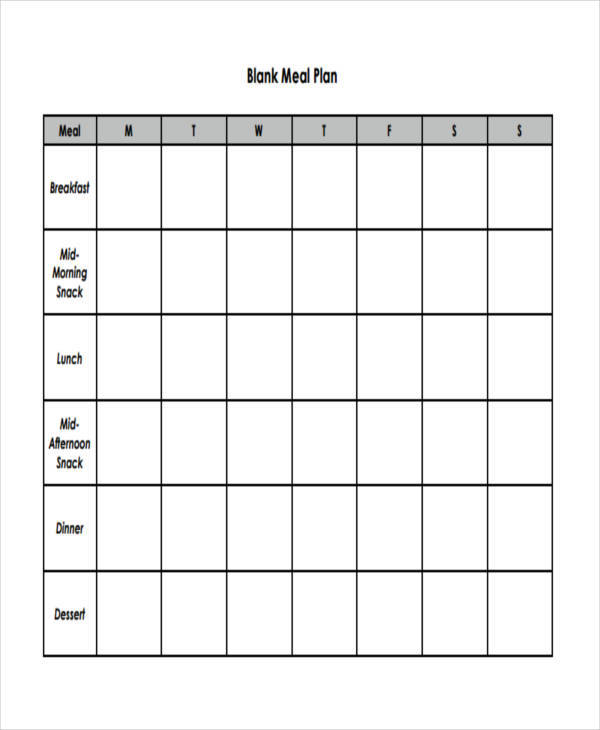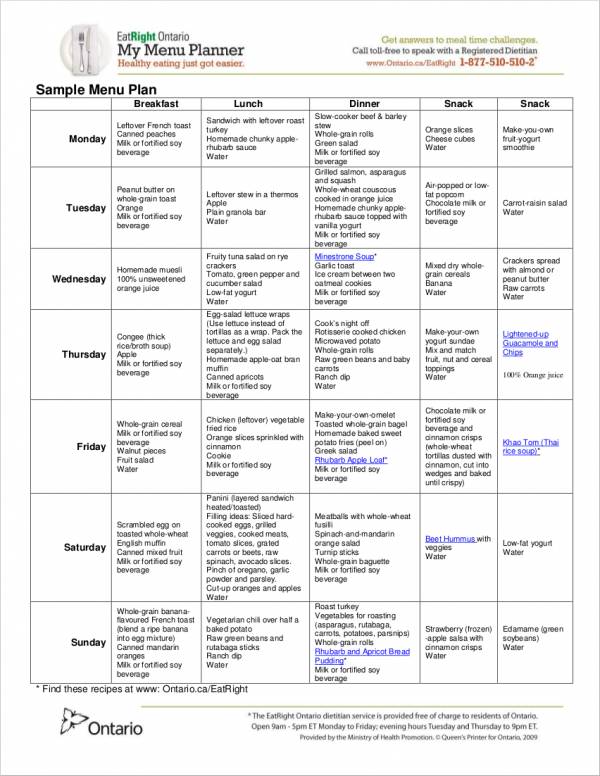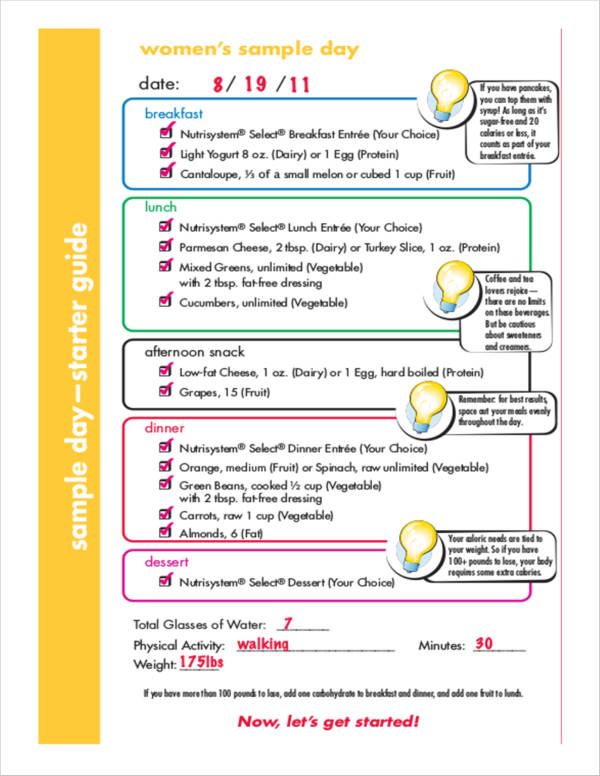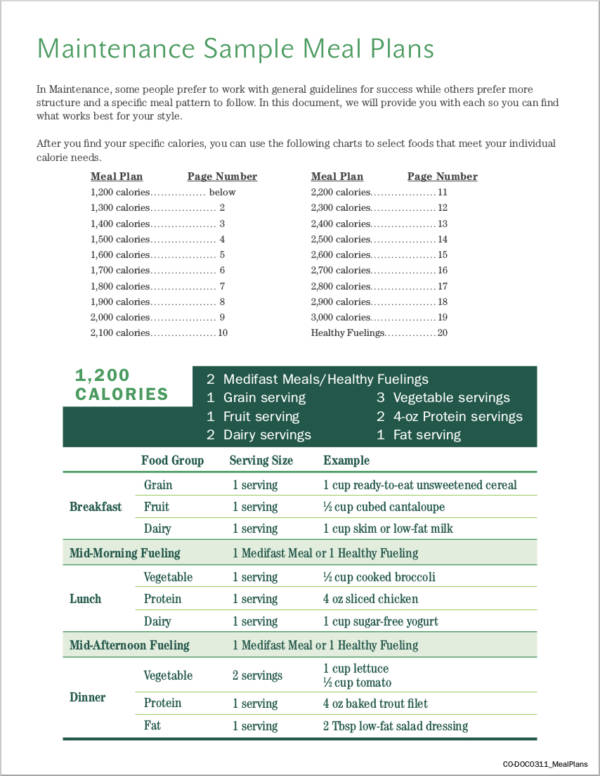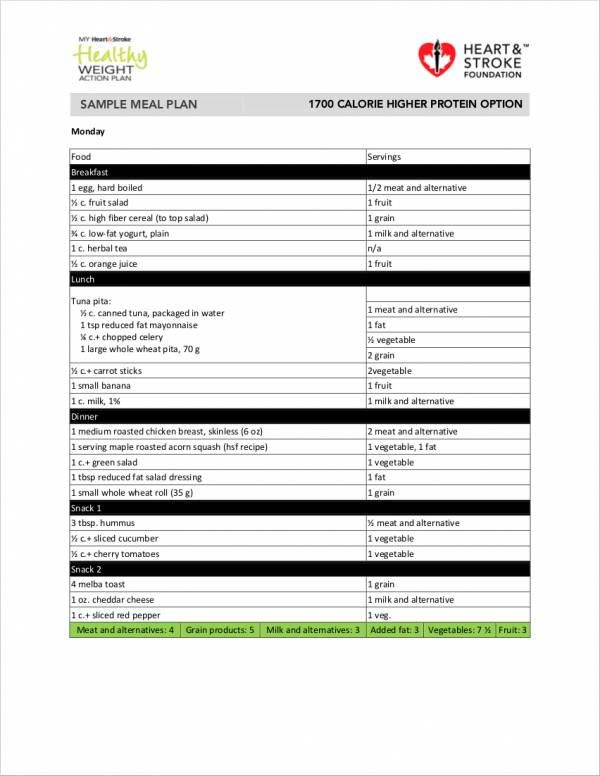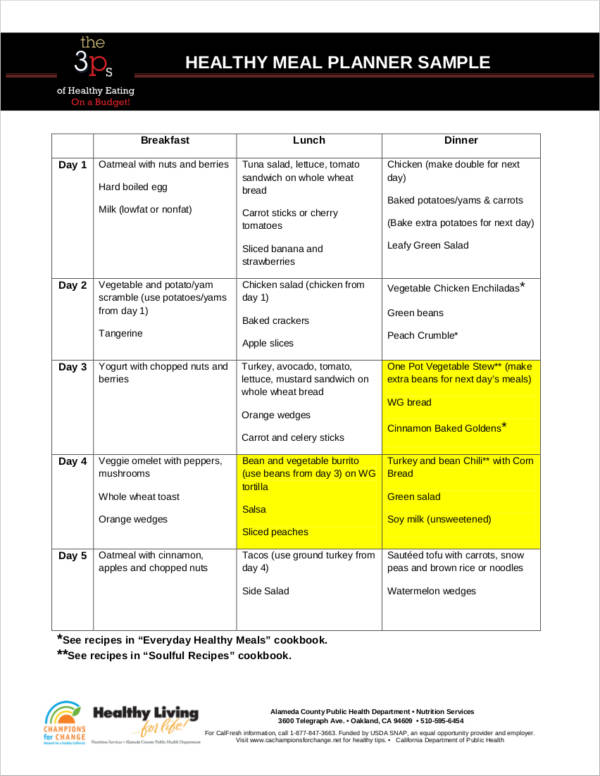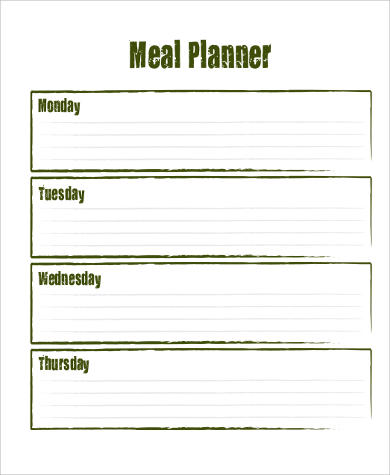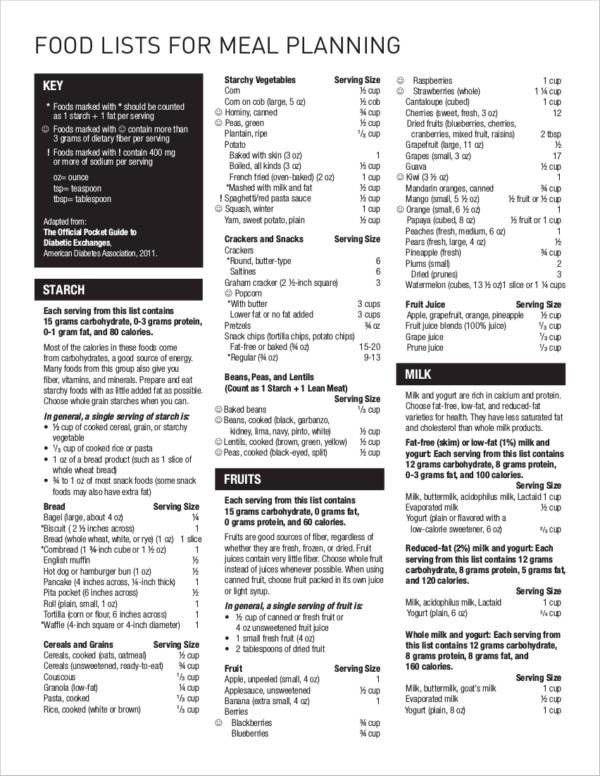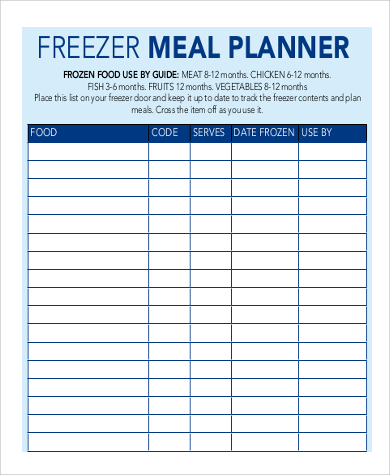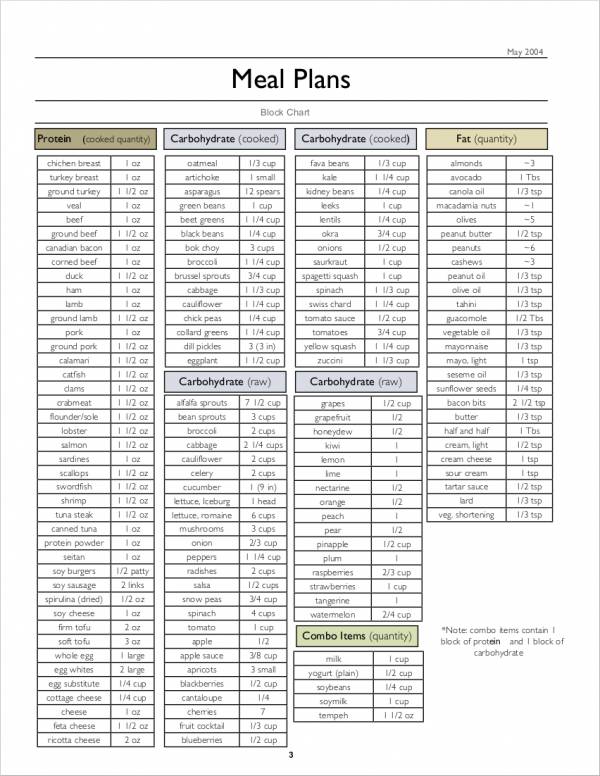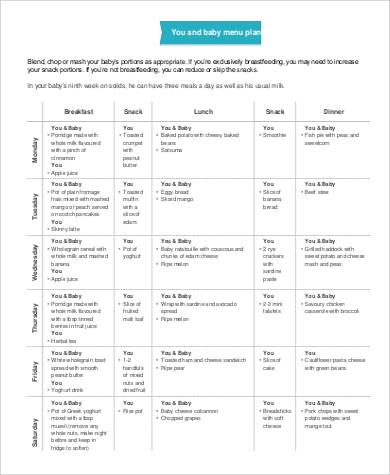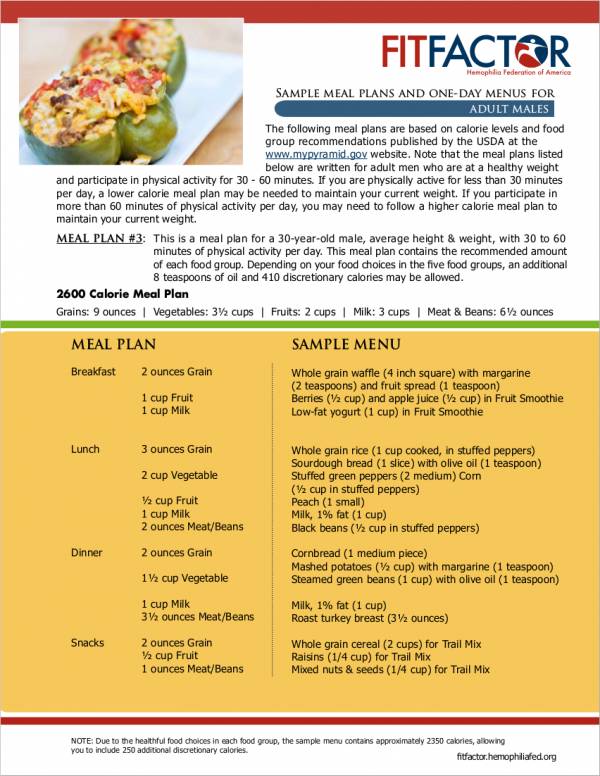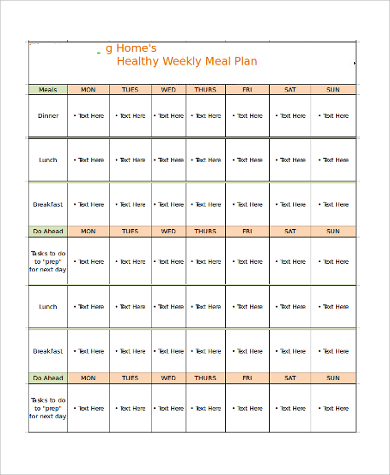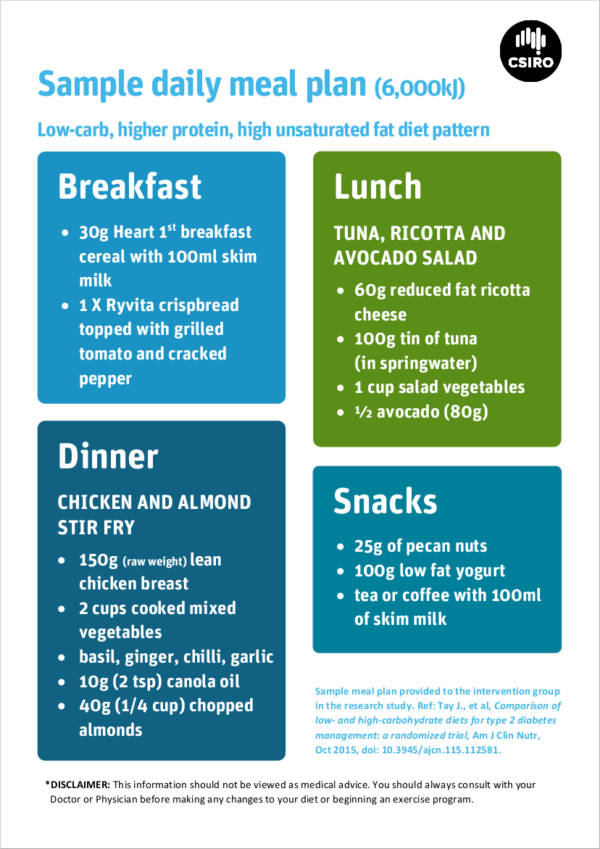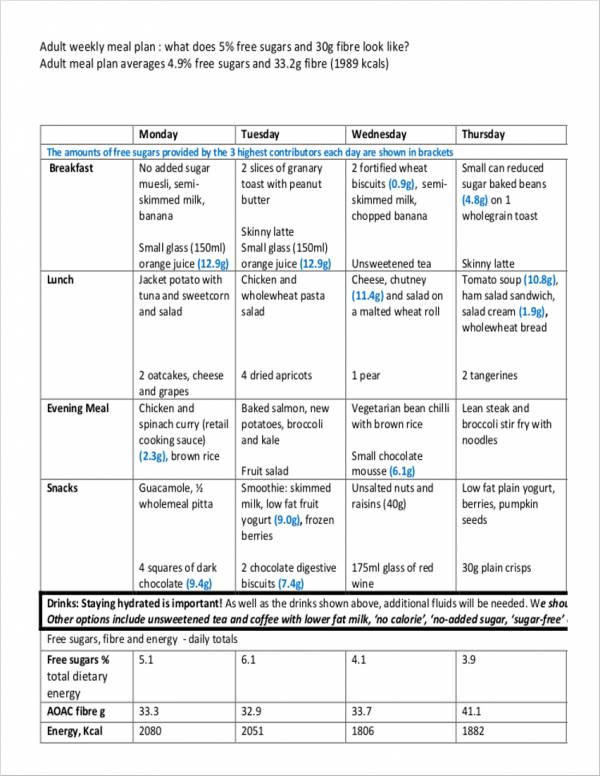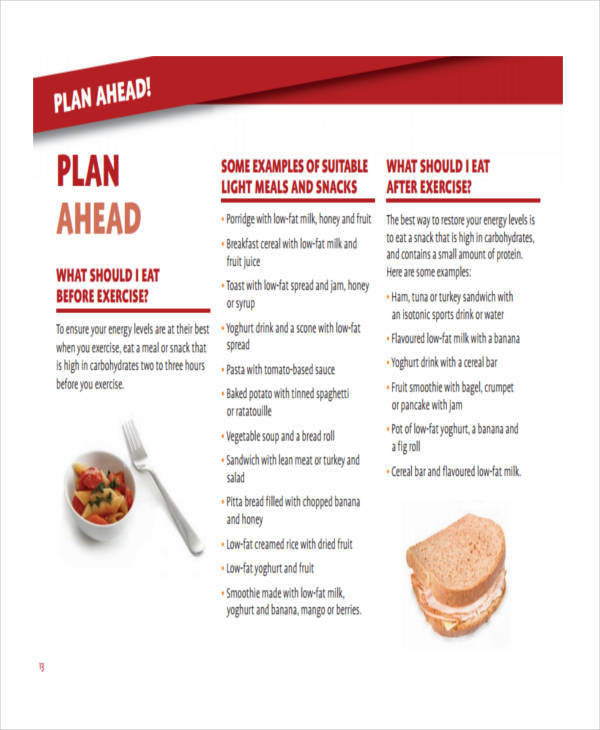A meal planner is basically a list of food items that you will be preparing and cooking for the coming week. It also includes the schedule, such as the dates and times, when the specific meals you have listed down will be eaten. They are helpful for people who are trying to lose weight, for families living busy lives, for planning meals for babies and toddlers, and for self-improvement.
Meal planning is not easy. It is not plainly just writing down a few food items or a weekly menu. It has to be thoroughly thought of and needs immense skills in being able to stick to a fixed budget and trying your best to not go over it. In this article, we have a list of sample plans that you can easily download and use as your reference. We also included a few tips as well as some of the benefits of using meal planners.
Meal Planner Template
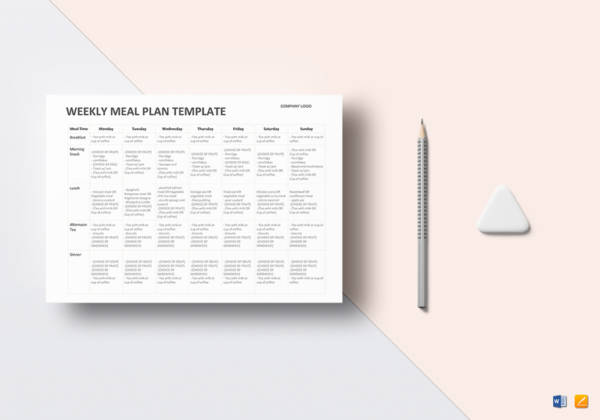
Blank Meal Planner
Sample Family Meal Planner
Women’s Meal Planner
Maintenance Meal Planner
High Protein Meal Planner
Healthy Meal Planner Sample
Printable Weekly Meal Planner
Printable Blank Meal Planner Templates
Diabetes Personal Meal Planner
Standard Meal Planner in PDF
Benefits of Meal Planning
Meal planning can be quite a task, but if you do it right, you are sure that it will be an effective one. This is very important especially if you are planning for the whole family. Eating together as a family has a lot of benefits—from social, psychological, and even nutritional benefits. Some of the most important reasons why you should consider using meal plans are the following:
Healthier Food
When you do meal planning, you will be able to see that your grocery list will now include healthier food. This means that you will now end up buying, preparing, and eating healthier meals. Meal planning is great for those who seem to be getting takeaways more often than they should. You may even want to put it in your calendar or turn your simple meal planner into a meal calendar template.
You Can Save More Money
When you start planning your meals, you will notice that you will become more organized and you will also find that you will have better habits because you will be buying what you need instead of what you want.
This way, you will be able to save money since you will be able to avoid buying any unnecessary food items. It can also help you reduce the frequency of going to the market.
Variety in Your Diet
By creating meal plans, you will be able to put variety to your meals. You can avoid any bland flavored food and repeating the same recipes if you plan your meals accordingly. You will also be able to pick out food that your family will definitely enjoy.
Stress and Anxiety Reduction
You will definitely be able to reduce your stress and anxiety as you already know what you will be preparing for your next meal. This is true especially for those who live with extremely hectic schedules. By making use of the printable meal planner samples that we have in this article, you will surely have a good template to use as a basis for your own meal planner.
Tips for Effective Meal Planning
- Plan ahead. However, take it one week at a time. You can go on a trip to the grocery on a weekly or biweekly basis, plus, you can also pre-cut or pre-chop some of the ingredients so that preparation, when it is time to cook the meals, is cut in half.
- Bulk cooking. What you can do on a weekend is to cook some of the meals that are easier to prepare, freeze, and just thaw and reheat it on the weekdays when you are scheduled to eat the meals. Make every meal count, and by cooking in bulk, you can most certainly do this!
- Have everyone involved. You can have the kids involved by having a schedule about who has to do specific tasks. You can also ask them to join the preparation of ingredients.
- Converse during dinner. Keep all conversations light and make sure to make it relatable to everyone. During meal time, this will also be the time where you can ask the whole family the meals that they would want for the next week.
- Make the most out of leftovers. You can turn leftovers into delicious meals for next meal time. This way, you will avoid wasting food and you can definitely save money.
- Have labels for containers. A ton of times, leftovers are stored in your refrigerator. To make storage more organized and to know which leftovers you can use for future meals, have the containers labeled and include the date when the meal was cooked in the label.
Block Chart Meal Planner
Standard Baby Meal Planner
One-Day Meal Planner
Printable Meal Planner Chart
Low-Carb Meal Planner
Toddler Meal Planner
Food Group Meal Planner
Adult Weekly Meal Planner
Sports Meal Planner Sample
Daily Meal Planner in PDF
Getting Started with Meal Planning
People will usually do meal planning because they want to start eating well especially if they want to live a healthier lifestyle or make their workouts more effective in order to see results faster. The key to making a successful meal plan is by simply allotting a little bit of your time to planning your meals every weekend. You might find it difficult at first but you will surely get the hang of it the more you do it.
To make it easier for you, we will give you a step-by-step guide to making your meal planner. Are you ready? Check it all out down below.
Consider the Number of Meals You Will Plan
First, take a look at your weekly calendar and see what you have going for the following week. Obviously, if your week seems to be hectic, you will not have much time to prepare complicated meals. So you have to plan meals that are easy to prepare and make. You may opt to have more complicated meals on days where you have more time to spend in the kitchen.
How Much Time Do You Have?
Take a mental note of how much free time you have, or better yet, write it down on your calendar. Take note what cooking materials you will also need to prepare during the day and what you need to prepare. Again, cook in bulk and make sure the leftover can be used for more meals during the day. You know what they say, “Cook it once, eat it twice (or thrice, maybe even four).” Learn how to stretch and make the most out of one meal.
Food According to Mood
Think of the season, the weather, and the cravings! You can definitely base your healthy meal plan according to these things. You might even find recipe and planning way easier if you base it on these factors.
Stay within Budget
You can eat for less by knowing how to stretch your weekly budget. Think about food items that are in season and check out which ones are on sale.
Have a Master Recipe List
Have a food menu list of meals that are easy to prepare and are the usual go-to of the family. This will help to expedite the preparation. Feel free to also include any recipe that you want to try out.
Key in Specific Meals in Your Calendar
Your calendar should be filled with specific meals and make sure that every meal coincides with each other. When you are listing the recipes, make sure that the majority of ingredients needed for the recipes are at most the same, otherwise you will find yourself taking an unwanted trip to the grocery or the supermarket.
Write Your Grocery List
List down all the ingredients that you would need for the meals that you would be preparing for the week. Buy everything that you would be needing for the week. Have a quick inventory report of what you have and what you are out of. Make sure that you schedule your grocery shopping on your most convenient time.
Related Posts
FREE 4+ Yearly Lesson Plan Samples in PDF
FREE 50+ Strategic Planning Samples in Google Docs | Pages | PDF | MS Word
FREE 10+ Construction Project Plan Samples in MS Word | Google Docs | Apple Pages | PDF
FREE 10+ Construction Marketing Business Plan Samples in MS Word | Google Docs | PDF
FREE 17+ Construction Business Continuity Plan Samples in MS Word | Google Docs | PDF
FREE 11+ Construction Business Development Plan Samples in MS Word | Google Docs | PDF
FREE 20+ Budget Planning Samples in PDF
FREE 20+ Workout Plan Samples in MS Word | Google Docs | Pages | PDF
FREE 20+ Lesson Planning Samples in PDF
FREE 14+ Employee Work Plan Templates in PDF | MS Word
FREE 8+ Sample Weekly Meal Plan Templates in PDF
FREE 17+ Sample Classroom Management Plan Templates in PDF | MS Word
FREE 13+ Homework Planner Samples and Templates in PDF | MS Word
FREE 14+ Leadership Development Plan Samples in MS Word | Pages | Google Docs | PDF
FREE 15+ Sample Math Lesson Plan Templates in PDF | MS Word
